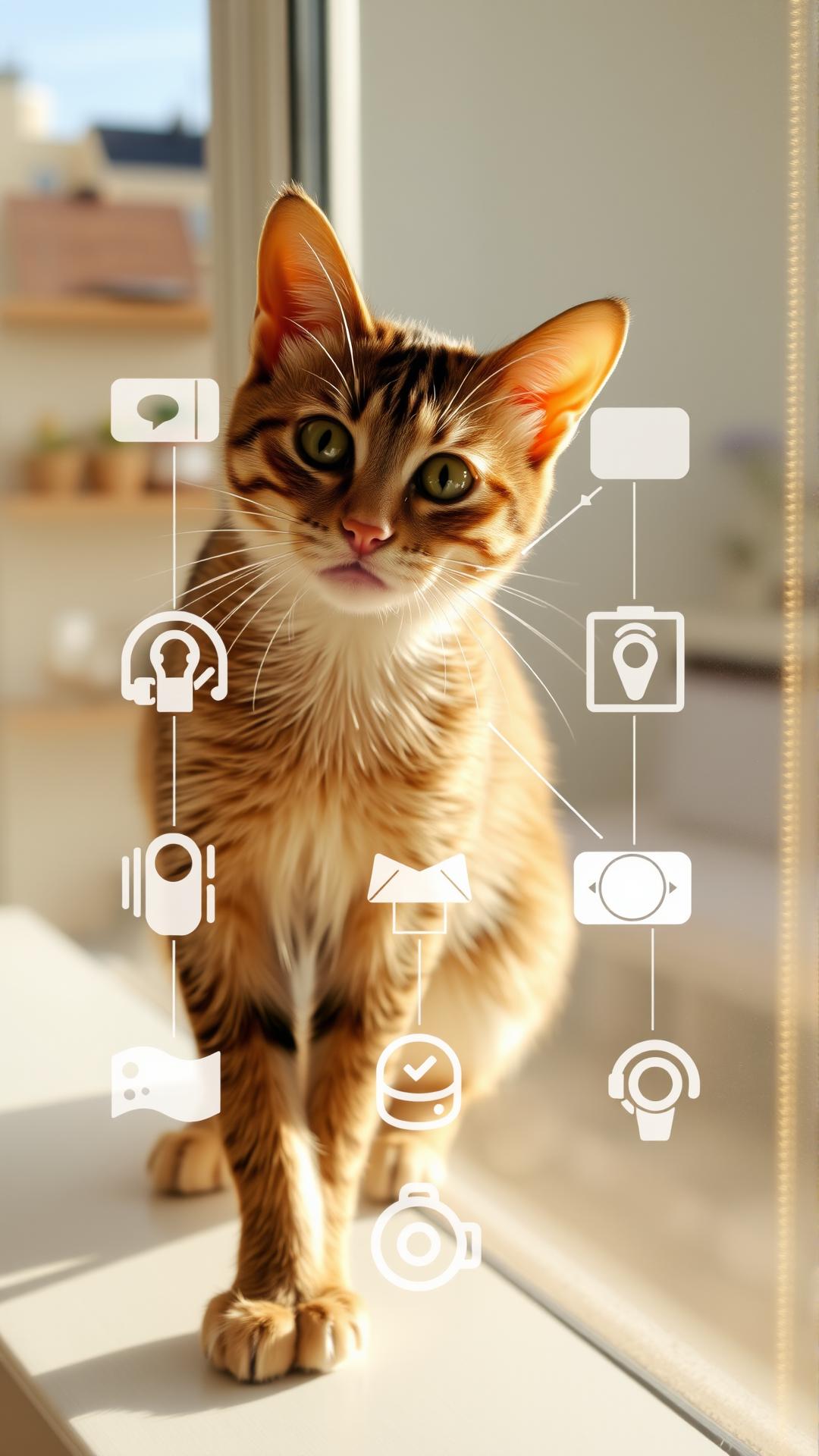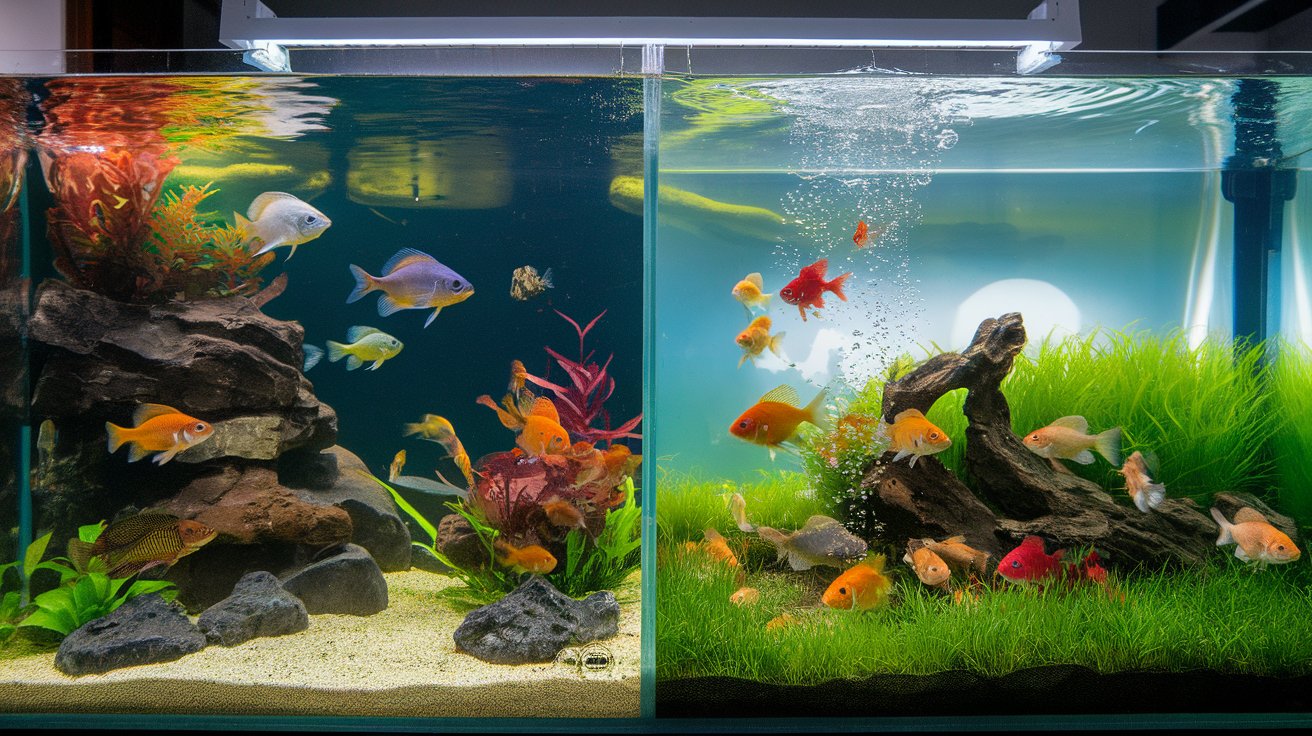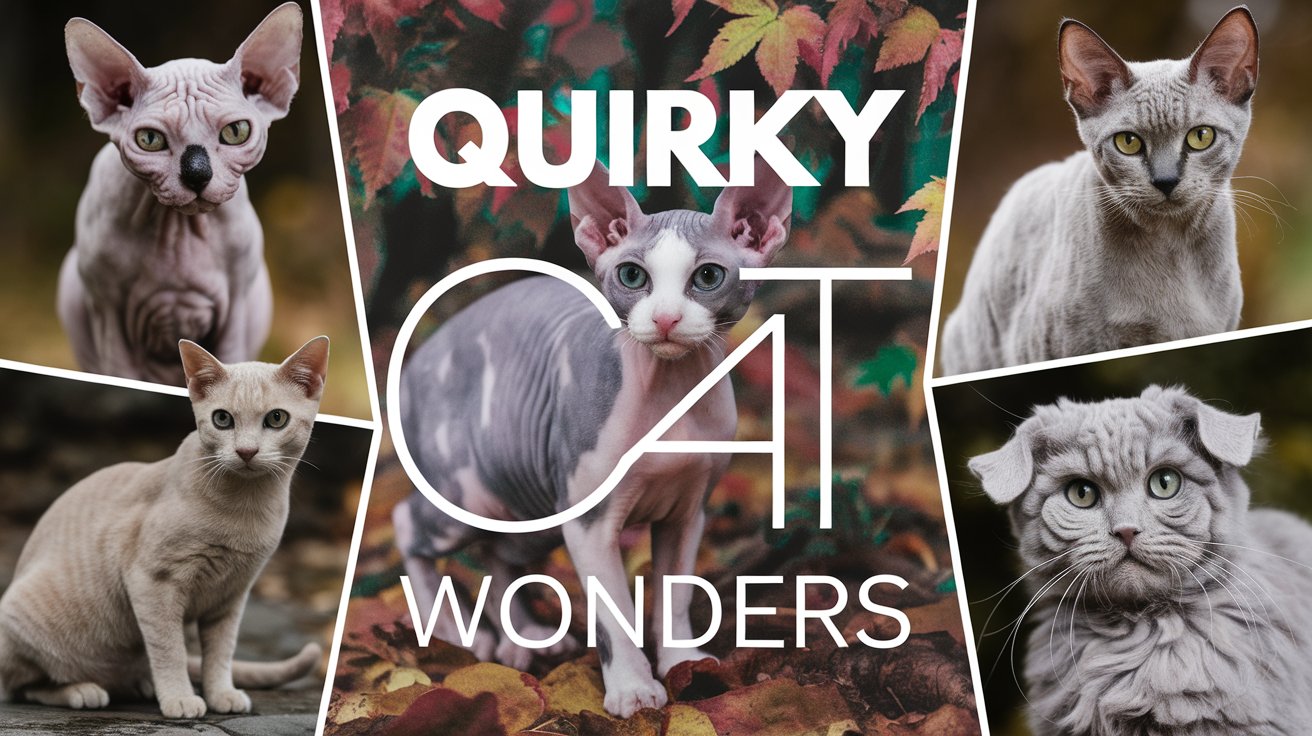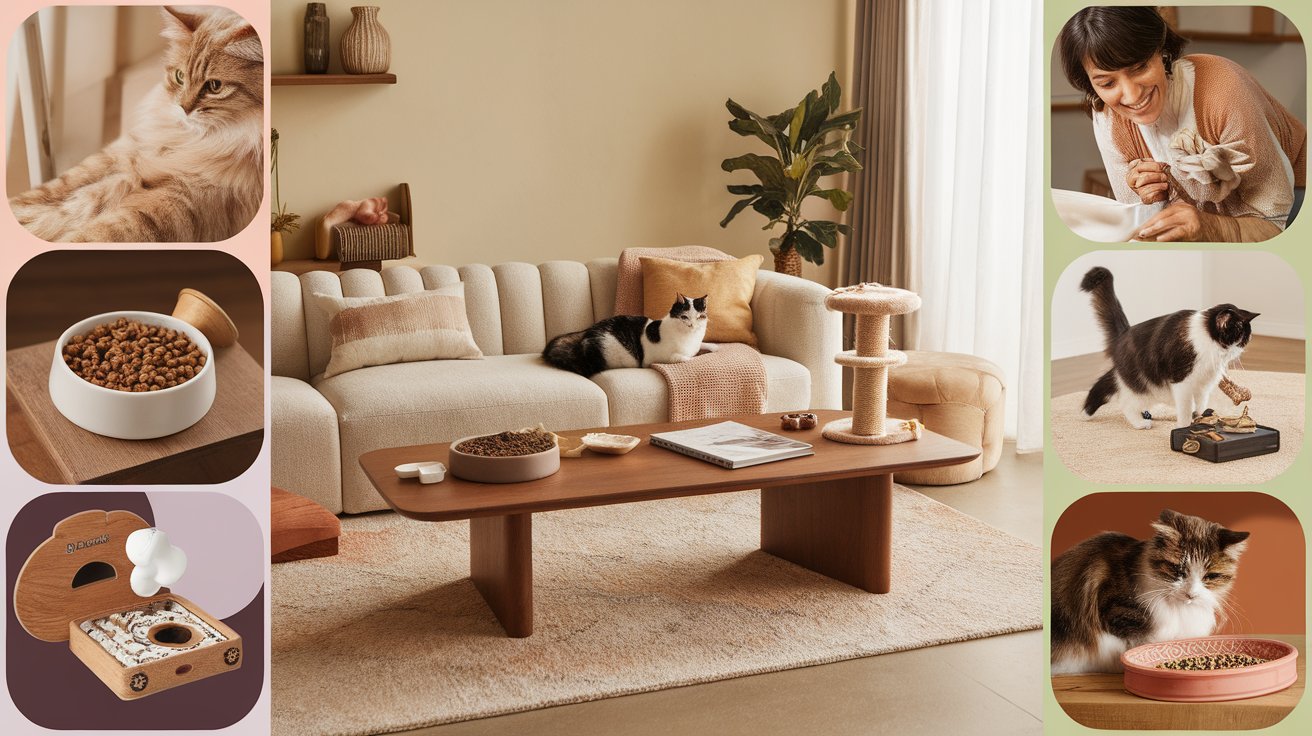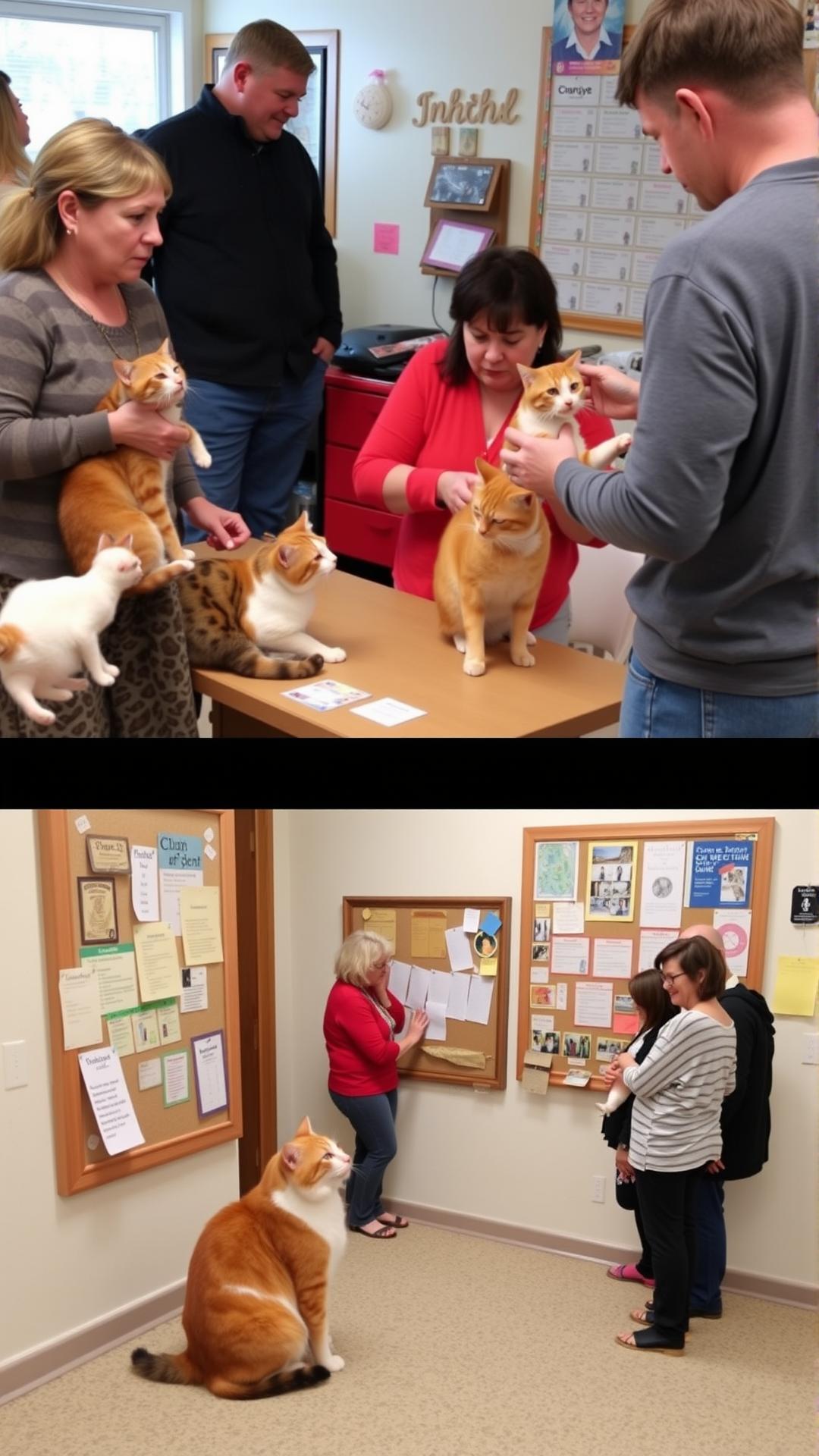Introduction
The relationship between humans and their feline companions is one built on love and communication. For cat lovers, understanding the nuances of cat behavior and vocalizations is vital to fostering a nurturing environment. Cats express their needs and emotions through a variety of methods including vocal sounds, body language, and even scent markings. This article explores how passionate cat owners can enhance their interactions with their pets by adopting effective communication techniques that respect the unique nature of cats.
Through a combination of anecdotal advice from cat lovers and insights from feline behaviorists, we will delve into specific practices that promote mutual understanding. From recognizing the subtle signals of a cat’s body language to deciphering their vocalizations, this exploration aims to equip cat lovers with the tools necessary to create a stronger bond with their beloved pets. By understanding the ways in which cats communicate, owners can not only respond appropriately to their needs but also enrich their overall experience with these fascinating animals.
Understanding Cat Communication: Explore the Various Methods Cats Use to Communicate
Vocalizations and Their Significance
Cats possess a remarkable array of vocalizations that serve as vital tools for communication. Understanding these sounds can significantly enhance the bond between a feline and their human companion. Each sound is imbued with meaning, and recognizing these can lead to a deeper connection with your pet.
Among the most common vocalizations is the classic meow. This sound is incredibly versatile; adult cats typically reserve meowing for human interaction, as they rarely meow at each other. The pitch, duration, and frequency of the meow can indicate various states—an urgent, high-pitched meow may signal hunger or distress, while a softer, lingering meow often expresses contentment or a desire for affection.
Purring, often associated with happiness, is another key vocalization. Cats purr not only when they are relaxed but also during moments of pain or stress. This duality is fascinating; the sound may serve as a form of self-soothing, helping cats cope with discomfort. Feline enthusiasts should pay attention to the context of purring, as it may warrant concern or indicate a need for attention.
Another notable sound is the chirp or chattering, commonly observed when a cat spots a bird or small prey. This unique sound often reflects excitement and frustration, as the cat is instinctively expressing hunting behavior while being unable to pursue the target. Understanding this vocalization can help owners recognize their cat’s natural instincts and create environments that stimulate their predatory nature safely.
Yowling is an entirely different matter. This loud, often distressing vocalization can signify various emotions, ranging from mating calls to threats. It can also be a form of territorial assertion or a sign that the cat feels threatened. Cat owners should familiarize themselves with this sound, as it often indicates that something in the environment is unsettling their pet.
A cat may produce unique sounds when communicating with their kittens or other cats. These include specific cries or calls that evoke responses, forming poignant social connections. In essence, recognizing and interpreting these vocalizations can create a profound understanding between cat lovers and their furry friends, enriching the overall companionship experience.
Vocal Signals and Their Meanings: Understanding Feline Communication Through Sound
The Language of Cat Sounds
Cats are complex creatures, and their vocalizations are a critical aspect of how they communicate. Distinguishing between the various sounds cats make can provide pet lovers with valuable insights into their feline friends’ emotional states and needs. The following categories illustrate some common vocal signals and their interpretations, helping to bridge the gap between human understanding and feline expression.
1. Meows: These versatile sounds are the most recognized form of vocal communication. A cat may use a single meow to say hello or engage attention, while multiple meows, especially when varying in pitch or intensity, often indicate excitement or urgency. An elongated meow can signal distress, demanding immediate attention. The specific tone and pitch of the meow can convey different emotions ranging from playful to annoyed.
2. Purrs: Typically associated with contentment, purring can also signify other emotions. Cats will purr when they are content curled up next to their human, but they may also purr when in pain or anxiety as a self-soothing mechanism. Understanding the context of the purr—such as the presence of other vocalizations or environmental factors—can clarify its meaning.
3. Hisses and Growls: These vocalizations are unmistakable expressions of fear or aggression. A hissing cat is generally feeling threatened and is warning potential adversaries to back off. Growling is more of an assertive warning, indicating that a cat is ready to defend itself if necessary. Recognizing these sounds allows cat enthusiasts to respond appropriately, ensuring their pets feel secure.
4. Chirps and Chirrups: Often used by a mother cat to communicate with her kittens, these sounds can also indicate excitement. A cat may chirp when spotting birds or other prey, reflecting a heightened state of arousal. Understanding this playful communication can enhance interactions during playtime, allowing cat lovers to engage their pets more meaningfully.
Understanding Context and Variation
The variations in a cat’s voice can be influenced by breed, personality, and environment. Some cats are more vocal than others, and observing the context in which certain sounds are made is crucial for accurate interpretation. Cat lovers should focus not only on the sounds themselves but also on the surrounding circumstances to foster better communication with their beloved pets. This deeper understanding paves the way for a more harmonious relationship, allowing both cat and human to connect in a more meaningful way.
Body Language Essentials: Understanding Your Cat’s Emotions
Key Cues in Feline Body Language
For cat lovers, effectively communicating with their feline companions hinges on an intricate understanding of body language. Cats may not speak in words, but their bodies convey a wealth of information about their emotional states and intents. Recognizing these signals can greatly enhance the bond between humans and their cats.
One of the most immediate cues to consider is tail position. A cat with a high, upright tail is typically expressing happiness or confidence, while a low, drooping tail may indicate fear or submission. The position and movement of the tail can also signal excitement; a twitching or flicking tail often means the cat is agitated or annoyed, whereas an elegant swish might suggest playfulness.
Another essential aspect is the cat’s ears. Ears pointing forward show curiosity or interest, while flattened ears indicate agitation, fear, or aggression. Humans should be aware that approaching a cat with flattened ears can lead to unintended confrontations. The eyes also play a significant role; slow blinking can be a sign of trust or affection. A cat that holds your gaze and slowly blinks may be expressing love, while dilated pupils can indicate excitement or fear. A keen observation of eye movement can help prevent misunderstandings.
Body posture provides additional insight into a cat’s feelings. A cat crouching low to the ground may feel threatened, whereas a cat lying on its back, exposing its belly, is often indicating comfort and trust. However, it’s important to remember that offering a belly rub is not always welcomed; this posture can also be a defensive position, ready for an ambush if necessary.
Recognizing Subtle Signals
While many signals are overt, cats can also communicate through more subtle cues. A slight twitch of the whiskers or a gentle flick of a paw can indicate curiosity or uncertainty. Understanding these nuances can prevent miscommunication; for instance, a cat appearing to “play” with a toy may actually be in a predatory state, making it vital to observe the context behind their actions.
Practicing awareness of these body language essentials allows cat enthusiasts to foster a deeper connection with their furry friends, creating a more harmonious living environment. By observing their cats closely, cat lovers can ensure they respond appropriately to their needs and feelings, thus enhancing their overall companionship.
The Role of Touch and Interactions in Feline Communication
Building Trust Through Tactile Communication
Effective communication with our feline companions often transcends verbal exchanges, immersing owners in a world defined largely by tactile connections. Physical interactions, such as gentle petting, cuddling, or even just being near your cat, play a fundamental role in cultivating trust between humans and their beloved pets. Many cat enthusiasts have found that the simple act of petting can bridge the emotional gap that may exist between them and their cats. When we touch our cats gently, we activate their natural instincts for comfort and security. This tactile communication allows cats to glean valuable information from their human friends about safety and affection.
To foster a better understanding of each cat’s unique preferences, many cat lovers advocate for observing how various forms of touch are received. For instance, while some cats enjoy long, slow strokes along the back, others may prefer a more vigorous rub behind the ears. Tailoring interactions based on individual responses can be instrumental in enhancing the bond shared with cats. Moreover, paying close attention to a cat’s body language during these interactions can provide insight into their current emotional state. Signs of enjoyment, such as purring or kneading, signal that the cat appreciates the touch, while flattened ears or an arched back may indicate discomfort.
Creating Positive Experiences Through Interaction
Physical play is another avenue through which cat lovers can enhance their communication practices. Engaging a cat in playtime with toys that mimic prey not only stimulates their natural hunting instincts but also generates shared enjoyment and strengthens emotional bonds. Interactive play often results in physical closeness, whether it’s through the shared thrill of chasing a feather toy or bonding over a laser pointer. These moments of excitement not only aid in exercise but also establish trusted interactive scenarios that encourage cats to express themselves more freely in other situations.
It’s also important to recognize the role of soothing physical contact in calming anxious cats. If a feline friend appears stressed or frightened, gentle strokes or even the warmth of your hand can provide reassurance. Techniques like creating a cozy environment where a cat feels safe and secure enhance the effectiveness of these tactile communications. Overall, the importance of touch and positive interactions cannot be overstated for cat lovers aiming to cultivate a deeper understanding and connection with their furry friends.
Creating a Cat-Friendly Environment: Enhancing Communication with Cats
Designing a living space that caters to the needs and behaviors of cats can significantly enhance communication between feline friends and their human companions. A well-thought-out environment allows cats to express themselves freely, building trust and understanding. Here are some effective approaches to creating a cat-friendly atmosphere.
Incorporate Vertical Spaces
Cats are natural climbers, and providing vertical spaces can encourage exploration and personal space. Consider installing wall shelves or cat trees that allow your cat to perch at varying heights. This not only gives them an opportunity to view their surroundings but also offers a safe haven when they need a break from stimulation. Such spaces can enhance communication by allowing humans to observe their feline friends in their natural behavior without intruding.
Designate a Cozy Retreat
A designated cozy retreat for your cat can foster feelings of safety and comfort. Provide a cat bed or a soft blanket in a quiet area away from daily hustle. Having a space where your cat can retreat to when they need some solitude encourages them to express emotions more openly. Once they feel secure, they are more likely to engage with you when they’re ready.
Use Enrichment Toys
Interactive toys are crucial for promoting mental stimulation and fundamental for meaningful communication. Toys that mimic hunting behavior, such as feather wands or laser pointers, not only engage your cat’s instincts but also enable bonding moments between you and your pet. Observe how your cat interacts with these toys to better understand their preferences and communication signals.
Arrange Furniture Thoughtfully
Furniture placement can significantly impact how cats navigate and interact with their environment. Ensure there are clear pathways for your cat to roam without obstacles. Open spaces enable better communication through non-verbal cues, such as body language and tail positions. When cats can move freely, they feel less stressed and are more inclined to communicate their feelings.
Incorporate Cat-Wall Art and Themed Decor
Creatively decorating your space with cat-centric art or pictures can reinforce a pleasant and engaging atmosphere. Opt for cat-themed wallpapers or framed cat drawings that reflect the humor and personality of feline friends. Such visuals can enhance the overall mood of your home and serve as icebreakers for interactions. The positive vibes created by a cat-friendly environment lay the groundwork for enriched communication.
A thoughtfully curated living space speaks volumes in fostering a deeper connection with your feline companions. By implementing these strategies, cat enthusiasts can encourage their pets to express themselves more freely, thus enhancing overall understanding between pet and owner.
Using Positive Reinforcement for Communication: Enhancing Understanding with Your Feline Friend
Effective communication with cats often hinges on understanding their natural behaviors and responses. One of the most impactful methods for cultivating this understanding is through positive reinforcement. By utilizing this approach, cat enthusiasts can encourage their pets to exhibit desired behaviors while simultaneously improving their overall communication.
The Principles of Positive Reinforcement
Positive reinforcement refers to rewarding a behavior to increase the likelihood of it being repeated. For cat lovers, this might involve offering treats, praise, or even playtime when their cat performs a behavior that they wish to encourage. For instance, when a cat uses a scratching post instead of the furniture, offering them a treat or engaging them in playtime reinforces the idea that scratching the post is a desirable action.
To effectively implement this technique, it is essential to choose the right rewards that truly motivate your feline companion. While some cats may respond enthusiastically to treats, others might find interactive play or favorite toys more appealing. Understanding what drives your cat allows you to tailor your reinforcement strategies effectively.
Building a Positive Communication Loop
Reinforcing positive behaviors not only improves immediate actions but also fosters a deeper level of trust and communication. When cats associate certain actions with positive outcomes, they are more likely to engage with their owners. For example, a cat that is consistently rewarded for approaching its owner may become more comfortable initiating interactions, leading to a stronger bond.
Transitioning from training sessions to everyday communication can be seamless when positive reinforcement is consistently applied. For example, if a cat responds to its name being called, rewarding them with affection or treats when they come can reinforce this behavior. Over time, the cat will not only learn to respond to their name but will also feel more at ease and willing to engage with their owner.
Integrating positive reinforcement into communication strategies offers cat lovers a powerful tool for enhancing their relationship with their pets. By fostering desired behaviors through rewards, cat enthusiasts can improve understanding and connection with their feline friends, paving the way for richer interactions and a more harmonious home environment.
Community Insights and Shared Experiences: Cat Lovers Share Their Best Practices for Pet Communication
Cat enthusiasts often find that their journey into understanding feline behavior is made richer by sharing experiences and advice with one another. Within this vibrant community, various strategies emerge that contribute to effective communication between cats and their humans. Here are some of the best practices that passionate cat owners have recommended.
Tips and Tricks from Cat Lovers
Many cat lovers emphasize the significance of observing body language. Cats utilize an array of signals, such as tail position, ear orientation, and facial expressions, to convey their emotions. For instance, a cat with an upright tail may be expressing joy and confidence, while a tail flicking rapidly can indicate irritation or agitation. Observing these subtle cues allows owners to better assess how their cat is feeling at any given moment.
Another commonly shared tip revolves around creating a peaceful environment that caters to a cat’s natural instincts. Many owners suggest enriching a cat’s surroundings with climbing structures, scratching posts, and cozy hideaways. These additions not only provide entertainment but also establish a sense of security, enhancing communication as the cat feels more at ease. One cat owner noted, “When I added a cat tree near the window, my kitty started interacting with me more, especially when birds were outside.”
Engagement Through Play
Interactive play is also a favored method of communication. Cat owners advocate for using toys that mimic prey-like movements to engage their feline friends. Feather wands and laser pointers can stimulate a cat’s hunting instincts and foster a stronger bond through shared fun. Many enthusiasts recommend setting aside dedicated playtime each day, as this not only enhances interaction but also allows the human to learn about their cat’s preferences and personality.
Many cat lovers emphasize patience and consistency. Creating a routine—whether it involves meal times, play sessions, or quiet cuddling—can establish trust and improve communication. One community member shared, “Maintaining a consistent schedule has made my cat much more responsive to commands and affection.” This consistency reinforces the reassurance that their cat craves, further bridging the gap between human and feline understanding.
Through shared practices and insights, cat lovers cultivate a deeper connection with their pets. The wisdom of this community offers valuable guidance, making everyday communication with our furry companions not only insightful but incredibly rewarding.
Conclusions
Effective communication with cats involves recognizing various forms of expression, including vocalizations, body language, and even behavior. By implementing the best practices discussed in this article, cat lovers can cultivate a more meaningful relationship with their pets. Engaging actively with a cat’s unique signals fosters trust and creates a harmonious living environment for both parties.
As you incorporate these practices into your daily interactions, remember to approach your cat’s communication styles with patience and respect. Each cat is an individual with its own personality, requiring a tailored approach. Through consistent application of these communication strategies, cat lovers can truly enhance their understanding and deepen their connection with their feline companions.


